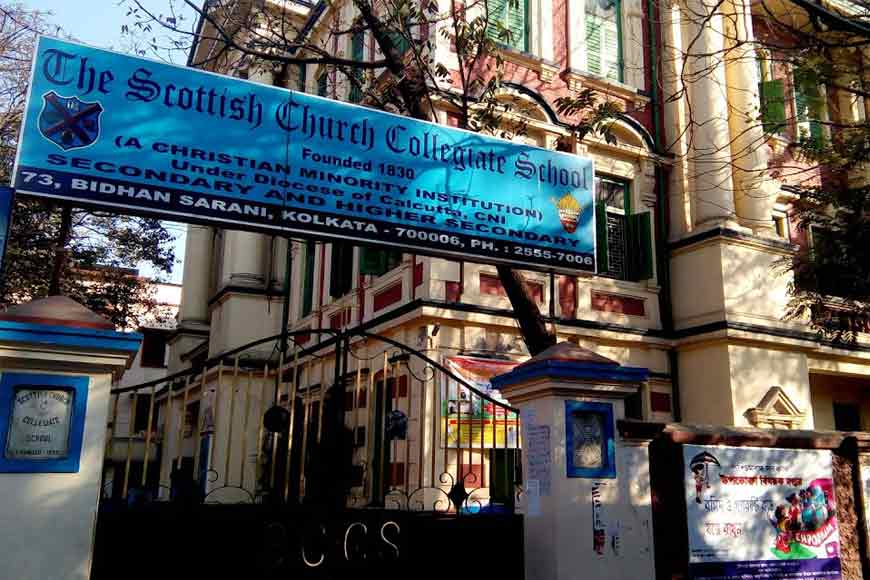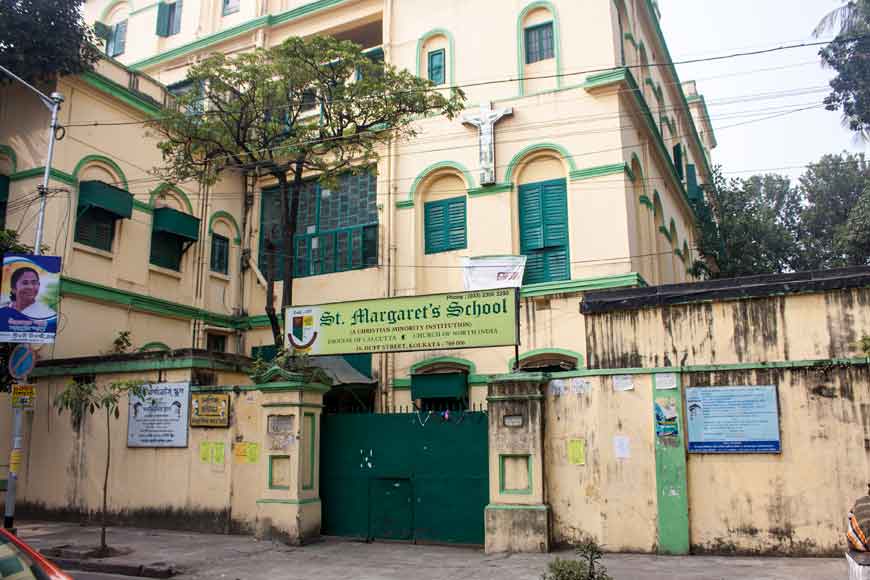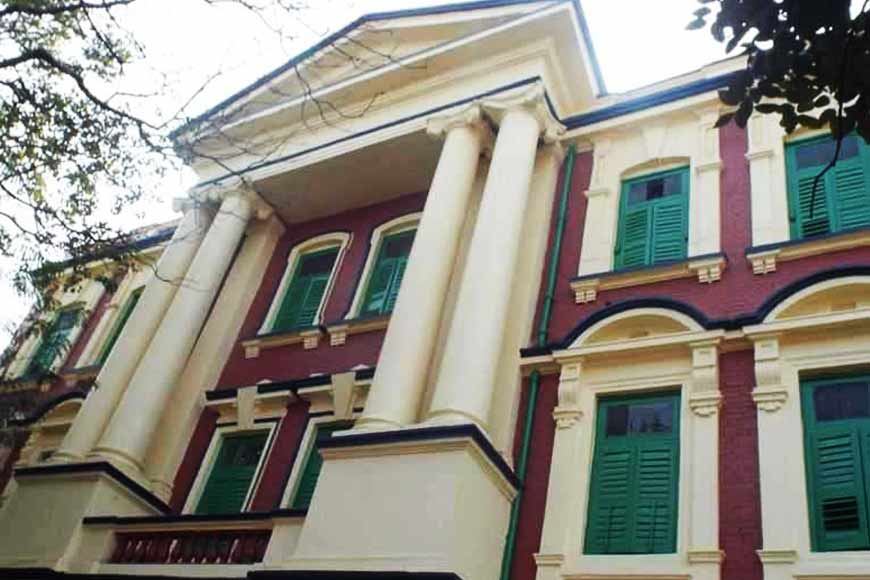Girl students set to join Scottish Church Collegiate School - GetBengal story

Scottish Church Collegiate School, Bidhan Sarani, North Kolkata
The grandiose structure of Scottish Church Collegiate School, a famous landmark of Bidhan Sarani in North Kolkata, is one of the renowned schools in the city that has a tradition of excelling in all spheres of education as well as extra-curricular activities. A large number of its alumni have been successful achievers and have been making their mark globally. Since its inception in 1830, Scottish Church Collegiate School was an exclusive male bastion but in a groundbreaking move, this premier educational institution is all set to open its doors for girl students from its next academic session, scheduled to commence from 2024.
 St. Margaret's School, 18 Duff Street, Kolkata
St. Margaret's School, 18 Duff Street, Kolkata
The co-education section of the 193-year-old school has been set up on the campus at 18 Duff Street, which is adjacent to Duff Church where a Diocesan Kindergarten School was run earlier by the church. It was restored and has been made the third campus of the school after its Bidhan Sarani campus and Kestopur campus. The school management authorities have decided to set up a pre-primary and primary (Class I) section with a capacity of 30 students each here. Affiliated to the West Bengal Board of Secondary Education (WBBSE) and West Bengal Council of Higher Secondary Education (WBCHSE), the school's primary medium of instruction has been Bengali with English as secondary medium but for the new session, English will replace Bengali as the primary medium of instruction.
Also read : The Doon was founded by Satish Ranjan Das
Residents of North Kolkata have been requesting the Scottish Church Collegiate School authorities for a long time to revise their policies and take in girl students as well so that they get an opportunity to study in a renowned school close to home. Many of them demanded to know the reason of being so rigid in their decision to keep their institution a citadel of male-only education. The school authorities went on a brainstorming session, discussed the issue with the bishop, and finally, under his supervision, embarked on this new venture to create a new history before celebrating the school’s bicentenary.
The school managing committee has decided to unlatch the door and let in girl students in the higher secondary (Classes XI and XII) level as well. Girls will be entering the hallowed portal of the male stronghold from 2024 and they will be accommodated in the main building on Bidhan Sarani.

The heritage structure that houses one of the best academic institutes in the city is also home to English Palladian architecture and beautiful campus. However, this is not the campus where the school started in 1830. There is a very interesting story behind the setting up of the school by Scottish Presbyterian missionary, Reverend Alexander Duff (1806 - 1878) on July 13, 1830. He was the first missionary to India sent by the evangelical organization, Committee of the General Assembly of the Church of Scotland on Foreign Missions. Duff had great influence on the educational and social policies of the colonial government. In fact, immediately after his arrival from Scotland, Duff joined the current debate on education policy. He promoted English as a medium of instruction for the natives. This, he reasoned, would open up the whole world of Western thought and sciences to Indians, and would allow them to climb the social ladder and find gainful employment after leaving school. In 1835, the government resolved to impart education in English language and promote European science and literature. Duff played crucial role in shifting the mood of the administration from oriental to Western education and his decision continues to affect education in India to this day.
Duff established a school in Feringhi Kamal Bose’s house at 51 Upper Chitpur Road, in the Jorasanko area. The school started with five pupils but gained fame quickly and more students joined. Duff was forced to return to Britain in 1834 owing to poor health but his school continued to prosper. The school expanded into a college and in 1836 was relocated to Gorachand Bysack’s (Basak) house in the Garanhata area, where the Oriental Seminary now stands. Meanwhile, with Raja Rammohun Roy’s help, it was decided to build the college’s own structure. Accordingly, the foundation stone was laid at at Cornwallis Square on 23rd February 1837. Finally, the college, later named The General Assembly’s Institution, moved to this new building in 1839. Duff was also involved in setting up the University of Calcutta. He was twice Moderator of the Free Church of Scotland in 1851 and 1873, the only person to serve the role twice.










